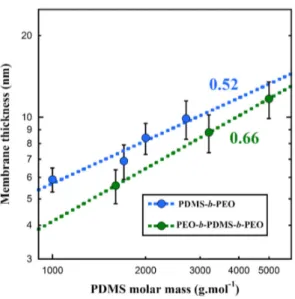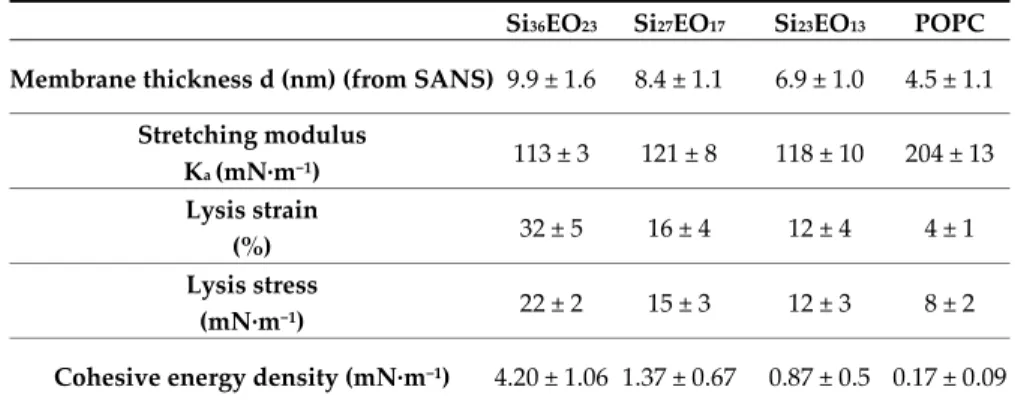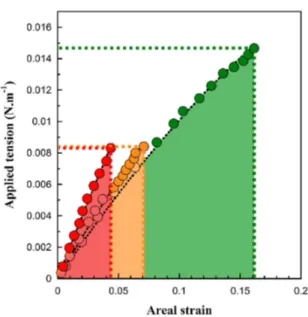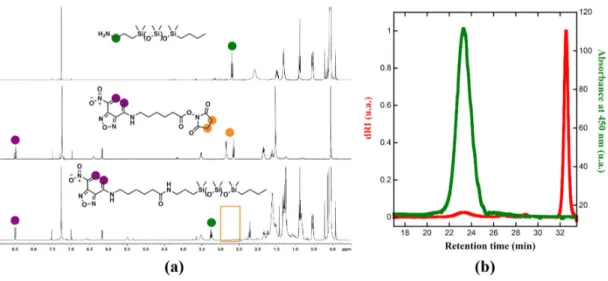Large and Giant Unilamellar Vesicle(s) Obtained by Self-Assembly of Poly(dimethylsiloxane)-b-poly(ethylene oxide) Diblock Copolymers, Membrane Properties and Preliminary Investigation of their Ability to Form Hybrid Polymer/Lipid Vesicles
Texte intégral
Figure

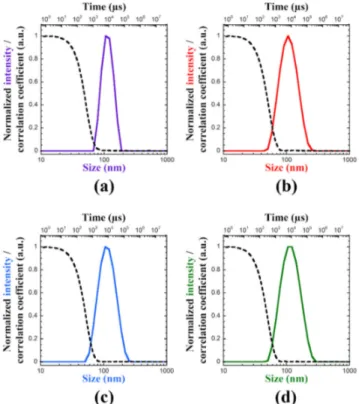


Documents relatifs
The relation-ship between membrane composition (% polymer lipid , presence of domains) and properties like elasticity, permeability, tumor-targeting ability, is not
axis correspond to metustable state, with one preferential state n * for each parity. In this example, the lowest chemical potential is obtained for ,I* even, which
strongly segregated limit, the lowest free energy state for the pure diblock copolymers, is the lamellae phase up until E = 0.28, according to a recent calculation by
Renormalization group calculations based on the two parameter model pre- dict that the effects of chemical mismatch on the size of diblocks appear only as corrections to scaling
This could be due to a higher degree of self- association of the oligodiol (BPA-PO1 is shorter than BPA-PO2, and therefore has a higher concentration of terminal
Based on combined analyses of sample 10 by SEC, DLS, TEM and turbidimetry, we can reasonably assume that amphiphilic copolymers are actually formed that assemble during
The hybrid block copolypeptide with a 63 % hydrophilic weight fraction, namely PBLG 45 -b-ELP, self-assembled similarly and formed spherical nanoparticles both by dialysis
Intensity of the scattered light in the aqueous phase after emulsification and creaming expressed in percent relative to the initial scattered intensity of the PDMS
